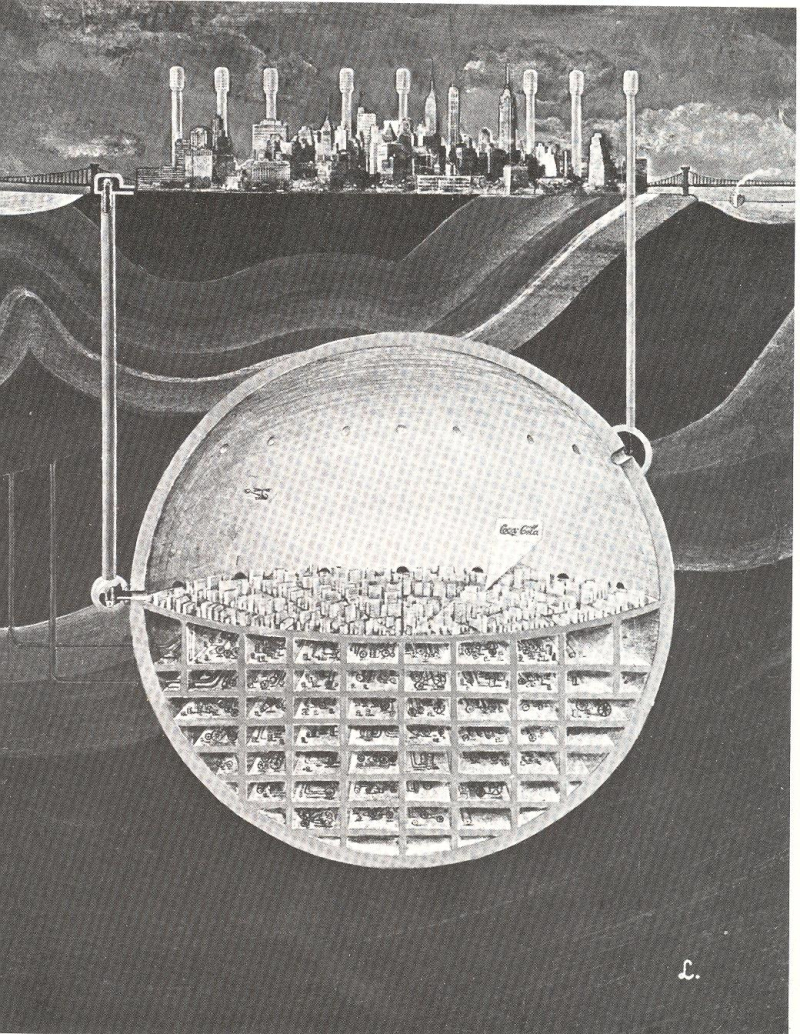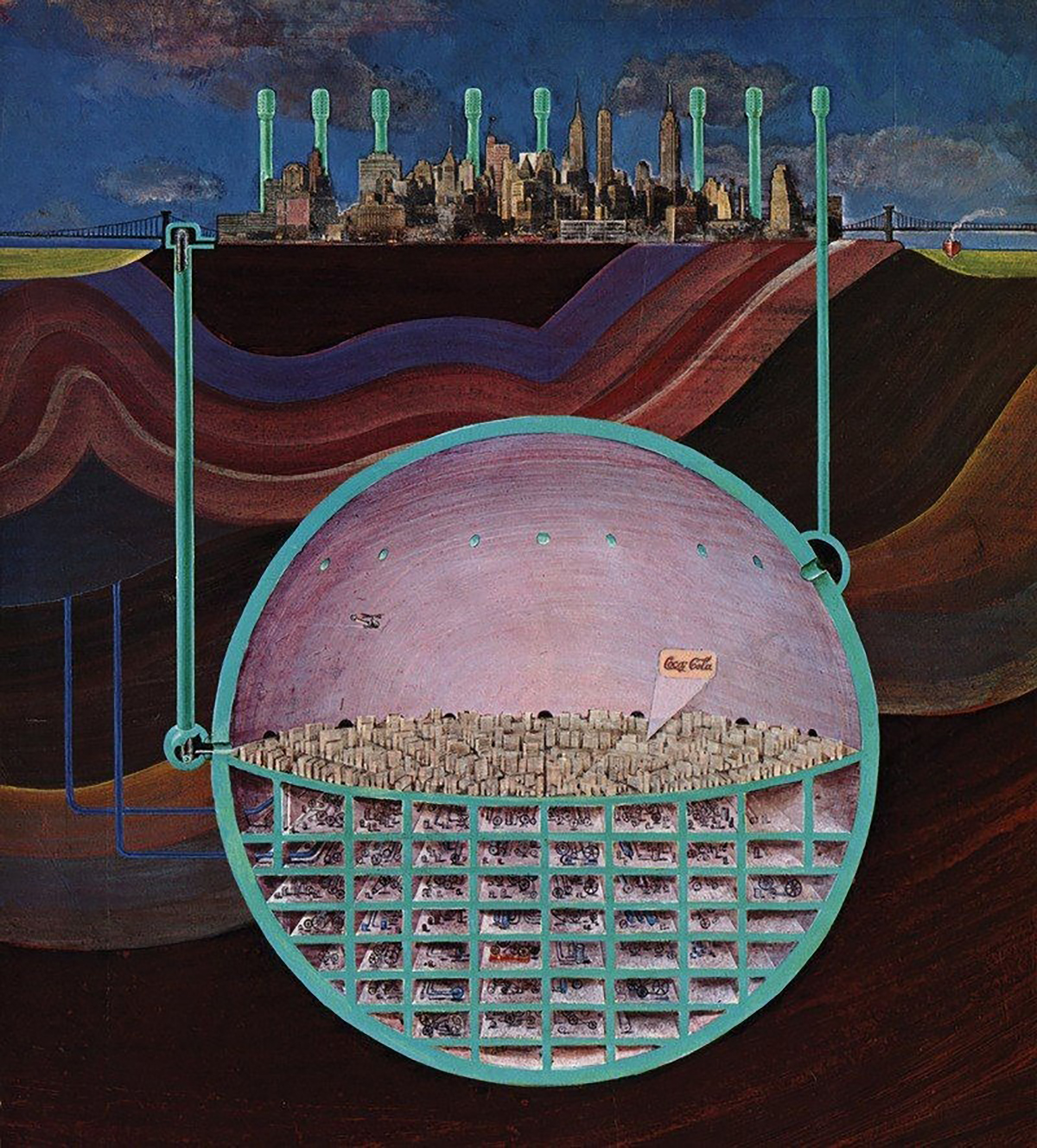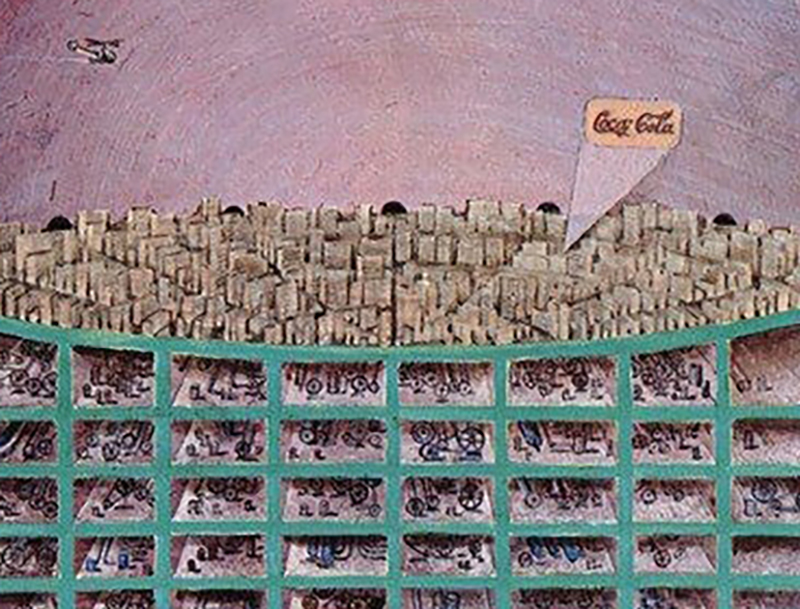In 1969, the Canadian-born American architect Oscar Newman (30 September 1935 – 14 April 2004) designed a nuclear bomb-proof city beneath Manhattan. In a vast spherical space itself created by a series of nuclear explosions, he’d build a city pretty much like the one above, with streets and buildings on a grid system, with many levels of further underground spaces. Air would be recycled via massive “air filters” reaching the surface. It’d be like living on the London Underground, only cleaner and with fewer pigeons and delays.

Alison Sky and Michelle Stone’s Unbuilt America, McGraw Hill, 1976
As he wrote:
“Manhattan could have a half-dozen such atomic cities strung under the city proper… the real problem in an underground city would be the lack of views and fresh air, but its easy access to the surface and the fact that, even as things are, our air should be filtered and what most of us see from our window’s is somebody else’s wall.”
Not that living below ground was a new concept, what with it being rooted in prehistoric cave dwelling. And underground city’s have been a part of our imagination for decades. In 1925, American architect Harvey Wiley Corbett (January 8, 1873 – April 21, 1954), known for his skyscraper and office building designs in New York and London, thought overcrowding in Manhattan could be solved by moving all roads below ground. His vision was that by 1950, there would be no vehicles above ground.
Other notable dreams of subterranean city’s include those created by Frank Herbert in his 1969 novel Dune and in E.M. Forster’s The Machine Tops (1909), a short story in which humanity has isolated itself beneath the ground, enmeshed in comfort orchestrated by a quasi-sentient Machine.

Newman, who espoused the idea of controlling or at least coercing human behaviour and impulses through architecture, believed his city below could save Americans from being killed nuclear weapons fired from the Soviet Union.
In 1972, Newman developed his Defensible Space Theory (Defensible Space: People and Design in the Violent City), outlining his vision for “a residential environment whose physical characteristics — building layout and site plan — function to allow inhabitants themselves to become key agents in ensuring their security.” In such a place, each of us has a domain we own and feel responsible for, so “the criminal is isolated because his turf is removed”.
The work features a study from New York that pointed out that higher crime rate existed in high-rise housing projects than in low-rise complexes. So to his underground nuke-proof city, which would be home to around half the population density of the place above.

According to Newman, there are five factors that make a defensible space:
Territoriality – your home is sacred; housing developments that evoke territorialism are “the strongest deterrents to criminal and vandal activity”
Natural surveillance – you can patrol and monitor your own patch
Image – the capacity of the physical design to impart a sense of security
Milieu – other features that may affect security, such as how near your live to a police substation
Safe Adjoining Areas – for better security, residents obtain higher ability of surveillance of adjoining area through designing the adjoining area
And because circulation paths and common entry are important aspects of defensible design, moving millions of us underground to an hermetic place below Manhattan accessible via a limited number of points make prefect sense. Well, it does if you all suffer from paranoia and selfishness and want to lord it over the earth by living in the bunker of an ideal city for moral improvement. Or you could move to Dubai.
Would you like to support Flashbak?
Please consider making a donation to our site. We don't want to rely on ads to bring you the best of visual culture. You can also support us by signing up to our Mailing List. And you can also follow us on Facebook, Instagram and Twitter. For great art and culture delivered to your door, visit our shop.



